TravelingForMiles.com may receive commission from card issuers. Some or all of the card offers that appear on TravelingForMiles.com are from advertisers and may impact how and where card products appear on the site. TravelingForMiles.com does not include all card companies or all available card offers.
Other links to products and travel providers on this website will earn Traveling For Miles a commission that helps contribute to the running of the site. Opinions, reviews, analyses & recommendations are the author’s alone and have not been reviewed, endorsed, or approved by any of these entities. Terms apply to all credit card welcome offers, earning rates and benefits and some credit card benefits will require enrollment. For more details please see the disclosures found at the bottom of every page.
JetBlue is a relatively new entrant to transatlantic travel (it launched its first transatlantic route in August 2021) and it arrived on the scene promising to shake up the market with “low fares and great service”.
We’re now two years into JetBlue’s transatlantic expansion and while we’ve seen the airline launch routes to London, Paris and more recently, Amsterdam, I’m not convinced that JetBlue’s transatlantic offering is as compelling as a lot us hoped that it would be when it was first launched.
The problem with JetBlue
The transatlantic market is probably the most cutthroat airline market there is, with big money to be made if you succeed (with premium cabins) and a lot of money to be lost if you don’t get things right (just ask Norwegian) so JetBlue is taking a risk by entering the fray.
Having flown with the airline earlier in the year, I had a chance to think about what JetBlue brings to the table and how that compares to what its competitors offer, and as things stand now, I think that JetBlue needs to do better.
Allow me to explain.
In several ways, JetBlue cannot currently match what its competitors can offer transatlantic travelers.
- JetBlue doesn’t offer more than two flights per day on any of its transatlantic routes and these are routes on which it’s main competitors offer multiple daily options.
- JetBlue doesn’t have a US route network that can match the networks of the bigger US carriers.
- JetBlue’s Mint Business Class seat is impressive for a narrowbody aircraft, but it’s (mostly) not better than the Business Class seats the competition offers and, in some cases, it’s worse.
- Unlike its major competitors, JetBlue cannot offer a Premium Economy product across the Atlantic.
- Because JetBlue isn’t part of a global alliance, it can only offer a very limited number of connections within Europe.
- Because JetBlue isn’t part of a global alliance, flyers who aren’t JetBlue elites but have elite status elsewhere, don’t get access to any special benefits.
- JetBlue’s loyalty program is niche and has few partners. That makes it less attractive than the loyalty programs of some of its competitors and means that it cannot use its loyalty program to tempt customers away.
- JetBlue doesn’t offer lounge access either internationally or domestically so, for example, where a oneworld Sapphire or Emerald elite will enjoy lounge access when flying with BA, AA, Iberia, or Finnair (even when they’re traveling in Economy Class), even JetBlue’s Business Class passengers must make do with whatever the airport terminal offers.
With all those negative points going against it, JetBlue needs to be able to offer some kind of big differentiator in order to take customers away from the bigger carriers, and while its Economy Class seats are probably the best in class, that’s not enough.
Economy class travelers, as a rule, don’t book flights based on the comfort of the seats offered (they usually have no idea what seats are available or how much space they offer). They book on convenience and, more importantly, price, so if JetBlue is to tempt passengers away from American, BA, United, KLM, Air France, and Delta, it will have to do so with its fares.
So… what are JetBlue’s fares like?
A lot of JetBlue’s press releases that discuss its transatlantic routes are keen to mention that the airline offers “low fares” to cities like London and Paris (e.g., here, here, here, and here), so I took a look at just how these “low fares” compare to what other airlines are offering on the same routes.
To do the comparison, I used Google Flights, and I searched for round trip Economy Class and Business Class fares for 7-day trips taken in the first 8 months of next year.
I did this for five of JetBlue’s transatlantic routes with all the trips originating in the US.
To make sure that I was comparing like with like, I filtered the results to exclude low-cost carriers like Norse, and I limited the results to non-stop flights only.
These are the results of those searches (performed on 13 October 2023):





A lot of the higher end fares are outliers (e.g., the $13k business class fare from JFK to Paris), but I’ve included them for accuracy and completeness and so that I can’t be accused of cherry picking.
Some of the things I noted include:
- When JetBlue is cheaper than its competitors, its fares are not significantly lower in either cabin.
- A significant proportion of the time, there is no difference between a fare being offered by JetBlue and the fares being offered by its competitors. The fares match to the penny.
- JetBlue’s fares are often uncompetitive on its JFK – London Heathrow route.
- It’s not hard to find examples of trips where JetBlue’s competitors offer cheaper fares.
For me, the simple takeaway from these search results is that it doesn’t look like JetBlue is shaking anything up or that it’s offering particularly “low” fares.
I’m sure some will try to argue that JetBlue’s fares are genuinely low and that what we’re seeing is JetBlue’s competitors being forced to bring their prices down to match the new kid on the block. But that isn’t the case.
I’ve been flying across the Atlantic for a lot longer than JetBlue has been offering its services, so I like to think that I have a reasonable idea of what transatlantic fares looked like before JetBlue came on the scene, and the fares that we’re seeing now are not too dissimilar to the fares we were seeing in the years leading up to the pandemic when JetBlue wasn’t a factor (2017 – 2020).
As far as I can tell, apart from when it has run a few stunning sales to promote the launch of a new route, JetBlue’s hasn’t really been giving us the new lower cost option that we were promised. And that’s a problem.
When you can’t match your competitors’ frequencies, their route networks, their loyalty programs, or the extra benefits they offer passengers, you must be able to beat them on price, and JetBlue simply isn’t doing that. At least not consistently.
Most people who need to book an Economy Class fare to Europe will look at the cost and then, after that, they may take a look at the time of day that the flights depart and make their decision what to book based on those two factors.
If JetBlue isn’t the cheapest, they’re unlikely to choose it over United/Delta/Air France/BA.
Most people who book Business Class fares for work care about how many flight options they have, how comfortable the cabin is and how good the airline’s loyalty program is. Then they’ll start thinking about the fare.
The flyers who book Business Class for personal travel usually care about the same things except that they usually care more about the fare and less about the number of flight options.
So, as JetBlue cannot compete on frequency or on loyalty program (Delta aside!), and its Business Class cabin isn’t better than a lot of the other options available, it can only really differentiate itself on price…and it’s not really doing that.
Is this really a viable long-term plan?
I don’t think so, but then there’s a reason why I’m sitting at my desk writing this article and not running a global airline, so perhaps I’ve missed something.
Bottom line
JetBlue has taken a step into the lion’s den by embarking on its transatlantic expansion and as things stand, I am yet to be convinced that the airline offers enough to worry the big boys.
If JetBlue doesn’t offer the cheapest fares and continues to lag its competitors in the areas I’ve mentioned, I can’t think why, long-term, people will choose it over the competition. Right now, it’s a bit of a novelty, but that will wear off.
I really hope that I’m wrong (because I have a soft spot for JetBlue and because the more transatlantic competition we have the better), but unless JetBlue gets more radical with its prices or addresses some of its other weaknesses, I can’t see its transatlantic adventure being a long-term success.

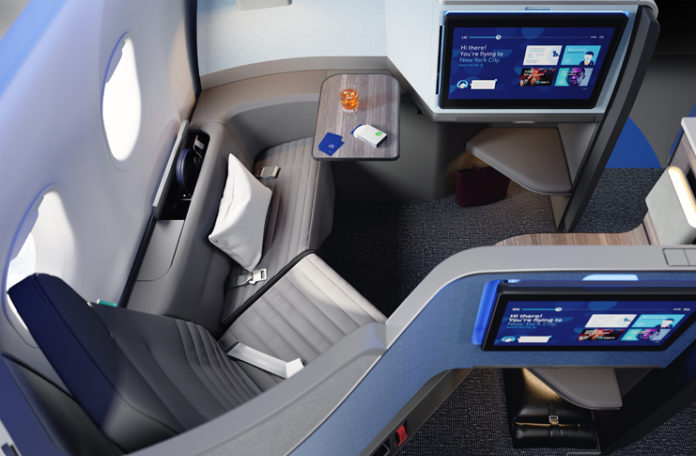

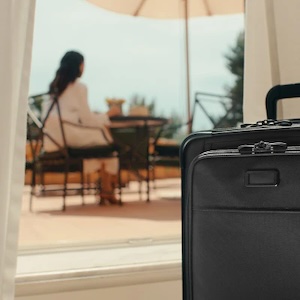
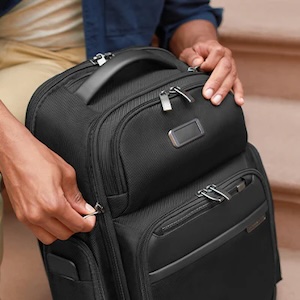
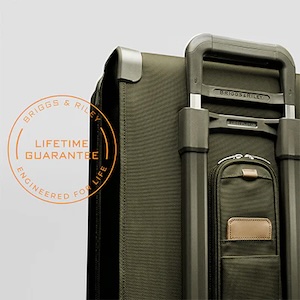

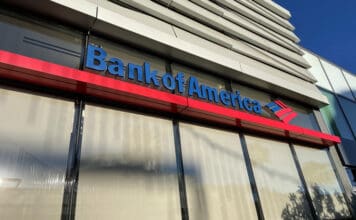

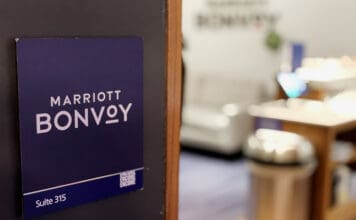


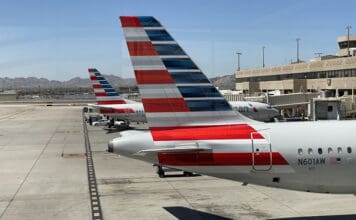
![Live: Qatar Airways [Europe] Black Friday sale – get up to 20% off an island with buildings and a beach in the background](https://travelingformiles.com/wp-content/uploads/2025/11/qatar-airways-black-friday-741-80x60.jpg)
![Qatar Airways [USA] Black Friday sale 2025 – Save up to 30% a black and white photo of a curtain](https://travelingformiles.com/wp-content/uploads/2025/11/qatar-airways-black-friday-1-80x60.jpg)
![Earn 5,000 bonus Amex points on your next JetBlue booking [Targeted] a jet plane parked on a tarmac](https://travelingformiles.com/wp-content/uploads/2025/06/jetblue-741-1-218x150.jpg)
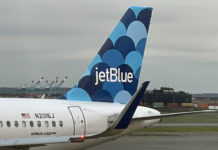
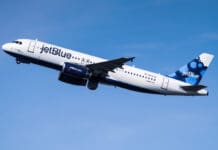

Interesting analysis BUT this is only a problem if JetBlue’s load factors are not where they need to be. If the planes are operating with decent load factors then none of the above matters. Yes, JetBlue might not be ‘disrupting’ the market for consumers, but it doesn’t need to if it’s making money.
What we’ve seen in the past year (two years, really) is exceptionally strong demand for transatlantic flights, particularly from the US. (Anecdotally, there are far more Americans in Europe this summer than I ever remember from pre-pandemic years.) I’m sure JetBlue is riding that demand wave just as much as the other airlines – aided by the drop in capacity from huge fleet retirements, eg. BA’s 747s.
I completely agree about the demand that we’re seeing right now, and that’s why I was careful to make reference to ‘long-term’ success. The dollar will not stay this powerful for ever and, historially, airlines have not been great at constraining capacity, so when things get a bit more ‘normal’, that’s when we’ll really see how well JetBlue can do.
But you’re basing your analysis of JetBlue’s long-term success on today’s pricing!
I’m basing the analysis on what JetBlue offers vs its competitors right now (quality of product, frequencies, loyalty program, benefits, etc…). As far as pricing goes, I’m just pointing out that (a) JB isn’t offering fares that are any lower than anyone else and (b) that if it continues to not match what its competitors offer product-wise, it will have to do something with its prices or there won’t be much incentive for most people to choose it over the others.
ETA: In a nutshell, I’m saying that I don’t think that offering fewer flights, fewer connections and fewer benefits while charging the same as your competitors is a viable long-term plan. I didn’t think that was a particularly radical idea 🙂
You wasted a lot of time writing this. JetBlue launched AMS AFTER the season was over and it’s immediately doing well … small comfortable aircraft , great service and food. Words gets around and they don’t have too many seats to fill.
Your comparisons mean nothing since not all business models are the same. Cost structures for connecting traffic and alliance membership are through the roof. JetBlue can keep most its revenue.
Presumably you say this because you believe that what’s happening with demand right now will never change? And that the dollar will always be this strong?
The only reason I won’t fly JB is they have to fly 30mph slower then wide bodies. I don’t want to spend an extra 45 minutes inside the aircraft.
Brad … your math is a bit off. Enjoy those 10 across 777s on AA and BA! It’s more like 10-15 min difference 🙂
If you look at their economy fares, they are still going to be a better value than an equivalent fare on the majors (even if you’re not including basic economy in your analysis) because JetBlue offers much more generous pitch and nice, new interiors with free wifi. So, the value proposition is unquestionably better for the average, unaffiliated (with status) flier.
Admittedly, frequent flier status and affiliate do play into the trans-Atlantic market if you are someone who travels a lot and you do not live in the Boston or New York areas. For example, I live near ORD and my next crossing of the pond will be nonstop on United.
But, if you do live in those places, you likely fly JetBlue a lot. And, if you do that, you’re getting Mosaic credit in which case, the mileage thing is moot. For those traveling from other markets to BOS or JFK to catch these flights, the lack of lounge access is a likely issue, as is the lack of domestic first class and thus continuity. But as far as apples to apples quality is concerned, JetBlue does offer a compelling product. Ask anyone if their trans Atlantic experience was better on Jetblue and the majority will say yes.
I fully agree with you about the value that JetBlue’s Economy Class cabin offers and if we were dealing with an informed population of travelers who also value extra pitch, that would be a big selling point for the airline.
Unfortunately, the reason why so many airlines have been able to get away with cramped and horrible economy class cabins is because it has been proven that (a) we’re usually not dealing with an informed population and (b) all most people really care about is price.
So, outside of JetBlue’s fanbase in the NE, most people looking for their next transatlantic booking will, I suspect, book with a competitor if JB isn’t cheapest and if the competitor is offering the same routing (i.e. non-stop).
I am so glad that you wrote this. You are absolutely correct. I mean, I dunno about the viability of Jetblue’s transatlantic biz model, but my flight to Paris and back in business class was abysmal. I fly to CDG multiple times a year every year. I usually fly AA or AF. Last month I decided to try JB. First of all there is no lounge at that horrible Terminal 5 in JFK or at CDG. Second of all the Mint so-called suite is a claustrophobic nightmare. What a horrible design. You feel wedged sideways the whole time. Hated it. The service was no better than coach class. The food was a joke also. No better than coach class food. I will never fly Jetblue across the Atlantic again.
The only way I would fly Jetblue Mint to CDG again would be if the fare was $1500 or less. Jetblue’s fare is not that much cheaper and the product and service is A LOT worse.
Sorry, I keep forgetting to add stuff to my comments. Jetblue’s MUCH-BALLYHOOED free wifi did not work either on the way to CDG nor on the way to JFK. The planes are already extremely worn and were very dirty. Only ONE toilet for the entire business class cabin (so many lines). OH, and if you fly Jetblue Mint across the Atlantic, be prepared for the shoulder harness of death! The Mint Suite comes with not just a seatbelt but a VERY uncomfortable shoulder harness that they are very strict about you having to strap on across your body. Never seen that in any other Transatlantic biz class cabin. I could go on and on about what a shitty experience it was.
JetBlue is my airline of choice, though I’ve yet to fly it to Europe. I really applaud the effort at trying to compare air fares and I understand that people don’t generally know about JetBlue’s better seat pitch. But there are other things to factor in. WiFi, luggage allowances, quality and availability of food and snacks, even the IFE. The first two of those can have an impact on cost. I’ve flown transatlantic on Delta, Lufthansa, Icelandair, Aer Lingus, KLM and even Norwegian from BOS-CDG and also when they had narrow body service from PVD to EDI. When I’ve compared the extras, THAT is when JetBlue’s prices have a better chance of being more competitive.
Luggage allowances can definitely have an effect on cost, but JetBlue’s cheapest transatlantic flights are no different to the flights offers by its competitors – there’s no checked baggage allowance.
That means that we’re back to relying on passengers to know that the seat pitch is good and that the internet is free (internet was terrible on my TATL flight btw), and the “regular” Economy Class traveler will not know about this. And, even if they do, I’m not convinced that the majority would be prepared to pay extra for those two things. History tells us that fare price is everything.
The free WiFi did not work on my flight to CDG nor on the flight back to JFK. If the fare is relatively the same, I will take AF and the better seat the better food the better service and the access to the Air France lounge any day over the JetBlue business fare.
I did send JetBlue a scathing email about their shitty Mint product to CDG so maybe they will improve it.
The only thing to keep in mind: at one point the very same things were said about the premium transcontinental market and yet they’ve found incredible success there.
They’re not a big player and I don’t think they’re trying to be. They’re an alternative!